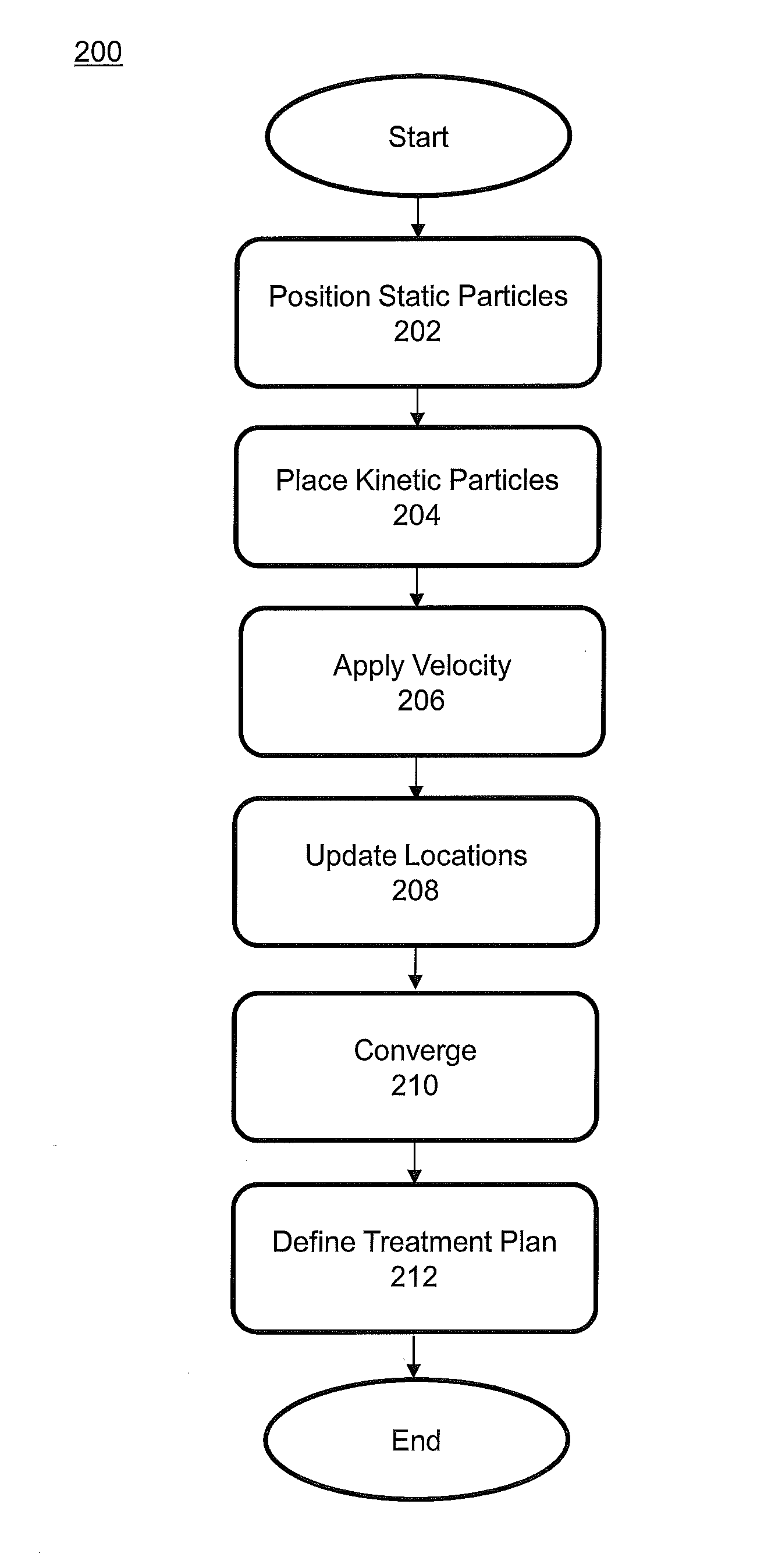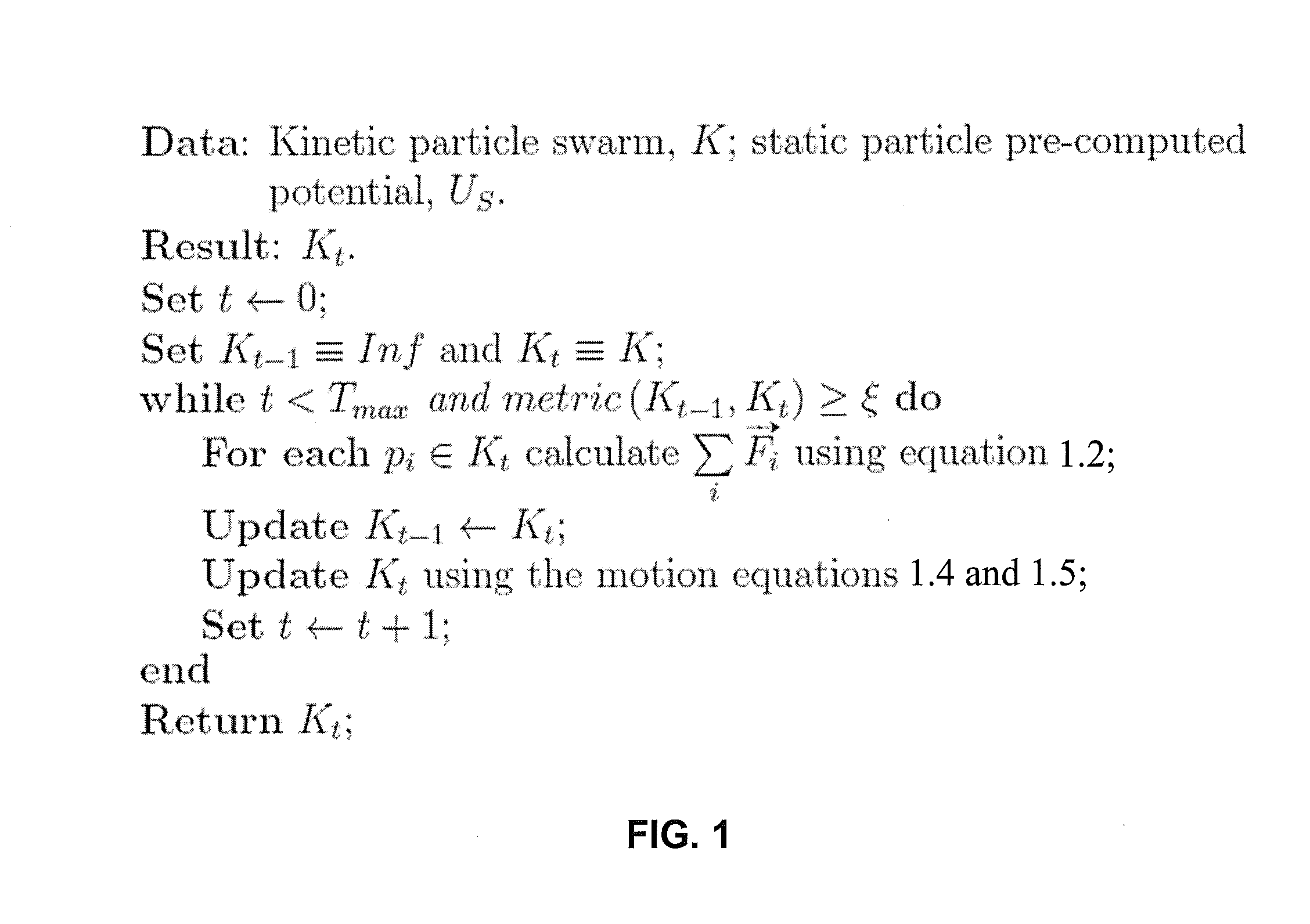Optimization methods for radiation therapy planning
- Summary
- Abstract
- Description
- Claims
- Application Information
AI Technical Summary
Benefits of technology
Problems solved by technology
Method used
Image
Examples
Embodiment Construction
[0042]The invention is based on the idea that physical models can be used to guide an optimization algorithm consisting of the interactions of a system of stationary and moving particles, such that a desired behavior can be simulated in order to obtain an optimum maximum or minimum state. Specifically, the invention is inspired by particle swarm optimization that evolves in time until mapping its state of minimum energy to optimal locations of radiation sources in radiotherapy and radiosurgery. In particular, the invention deviates from the classical PSO algorithm where a particle represents a potential solution of the optimization function by using the whole swarm or particle distribution as the solution.
[0043]Tumors, critical organs and other tissues are modeled as geometric volumes, whose surfaces have an associated potential function. The radiation source is modeled as kinetic particles subject to the forces from the potential functions from both the particles and the various ge...
PUM
 Login to View More
Login to View More Abstract
Description
Claims
Application Information
 Login to View More
Login to View More - R&D
- Intellectual Property
- Life Sciences
- Materials
- Tech Scout
- Unparalleled Data Quality
- Higher Quality Content
- 60% Fewer Hallucinations
Browse by: Latest US Patents, China's latest patents, Technical Efficacy Thesaurus, Application Domain, Technology Topic, Popular Technical Reports.
© 2025 PatSnap. All rights reserved.Legal|Privacy policy|Modern Slavery Act Transparency Statement|Sitemap|About US| Contact US: help@patsnap.com



